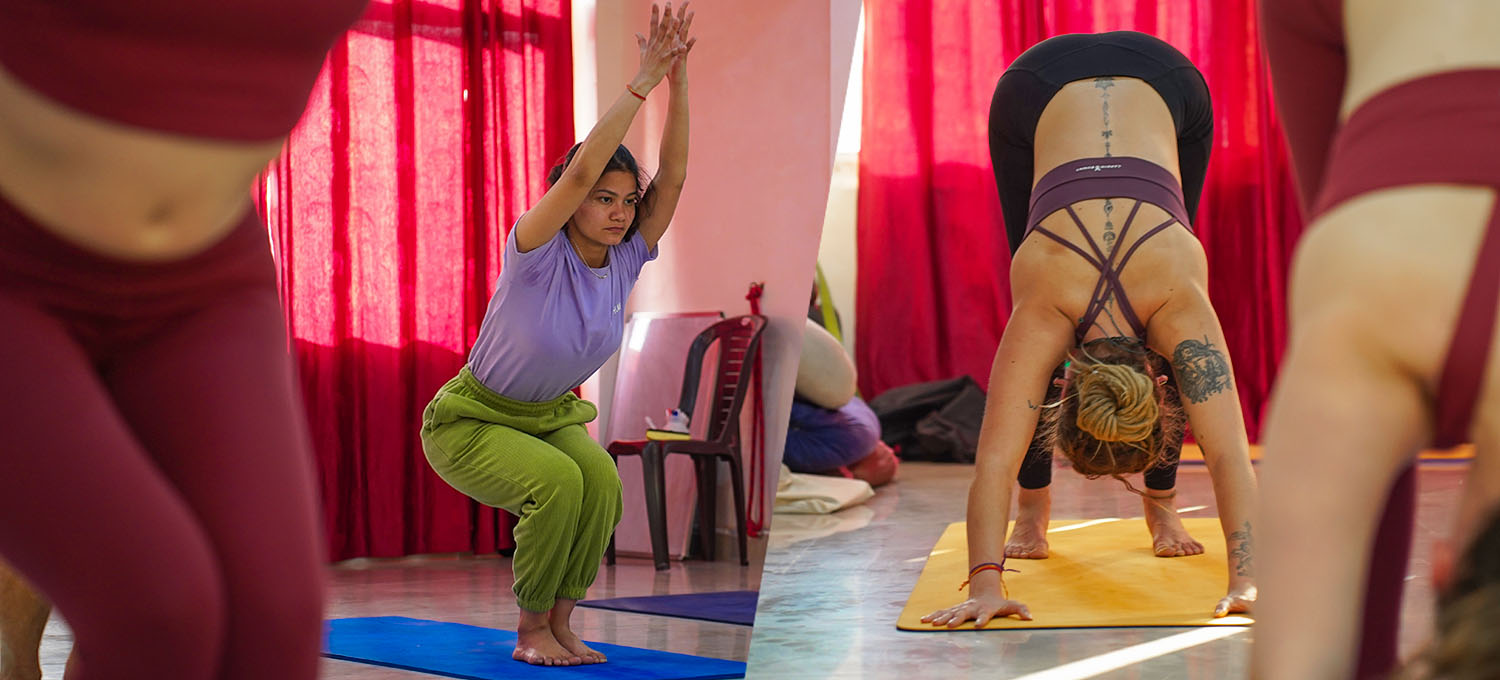Duration: 25 Days
Home » Yoga Blog » Hatha and Ashtanga Yoga

Difference Between Hatha Yoga and Ashtanga Yoga
Yoga is about stretching and de-stressing. When you get involved in the practice, you'll find it the most beautiful way to help your inner self. Yoga is not limited to just some asanas. There are many asanas in yoga, each with its unique focus and approach. There are different types of yoga in which these asanas are put under. Varied styles of yoga are crucial as they offer different approaches to achieving physical, mental, and emotional well-being. Each has its own unique set of postures, breathing exercises, and meditation techniques, which can provide different benefits for the practitioner.
In this blog, we are defining the difference between two main styles of yoga, i.e. Hatha Style and Ashtanga Style.
Hatha Yoga and Ashtanga Yoga are both popular styles of yoga with unique characteristics and benefits. Both styles are important to perform as they provide a plethora of benefits. Hatha yoga is a unique and traditional style of yoga that balances body and mind by focusing on physical poses (asanas), pranayama (breathing practices), and meditation. It is the combination of two Sanskrit words, that is, "Ha" meaning "Sun" and "Tha" meaning "Moon". It also implies that hatha yoga balances the sun and the moon energies of the body. It is a gentle and accessible practice suitable for beginners.
Ashtanga is a dynamic style of yoga which works on the synchronization of breath with varied series of postures. There are six special series of poses with different difficulties and intensities to build strength, flexibility, and concentration. Ashta means Eight and Anga means Limbs, therefore Ashtanga is an eight-limb yoga practice.
Here are 10 key differences between Hatha Yoga and Ashtanga Yoga:
- Origin: Hatha Yoga originated in India thousands of years ago, while Ashtanga Yoga was developed by Pattabhi Jois in the 20th century.
- Focus: Hatha Yoga focuses on physical postures (asanas), breathing techniques (pranayama), and meditation to balance the body and mind. Ashtanga Yoga emphasizes a series of flowing, dynamic postures (vinyasas) that build strength, flexibility, and endurance.
- Sequence: Hatha Yoga has no set sequence and allows for more flexibility and creativity in the practice. Ashtanga Yoga follows a specific sequence of postures that are done in the same order every time.
- Intensity: Hatha yoga is done at a slower pace and is gentle, whereas, the other hand, Ashtanga yoga practice is an intense practice which is physically challenging.
- Breath: In Hatha Yoga, breath control is important but may not be emphasized as much as in Ashtanga Yoga, where specific breathing techniques (ujjayi breath) are used throughout the practice to enhance the flow of energy and focus the mind.
- Philosophy: Hatha yoga works on the philosophy of opposing forces, i.e. yin and yang. It creates a balance between them while in Ashtanga yoga, Patanjali yoga explained the eight limbs of yoga.
- Props: Hatha Yoga often uses props such as blocks, straps, and blankets to help support and modify postures, while Ashtanga Yoga typically does not use props.
- Teacher Training: Hatha Yoga teacher training programs often focus on teaching safe alignment and modifications for a variety of students, while Ashtanga Yoga teacher training programs may focus more on teaching the specific sequence and traditional practices of Ashtanga Yoga.
- Goal: Hatha Yoga is often practiced for general health and well-being, while Ashtanga Yoga is often practiced with the goal of achieving spiritual enlightenment.
- Accessibility: Hatha Yoga is generally more accessible to beginners and people with physical limitations, while Ashtanga Yoga may require more strength and flexibility to perform the postures correctly.
Recent Posts
- A Complete Guide to Downward Facing Dog Pose
- Where Can I Find an Affordable and Best Yoga Teacher Training Course?
- Surya Namaskar: Exploring the Types of Sun Salutation in Yoga
- What Is Pranayama and Benefits of the Yogic Practice
- Importance of Yoga Philosophy in Yoga TTC
- Hip Opening Yoga Poses to Unlock the Tight Hips



